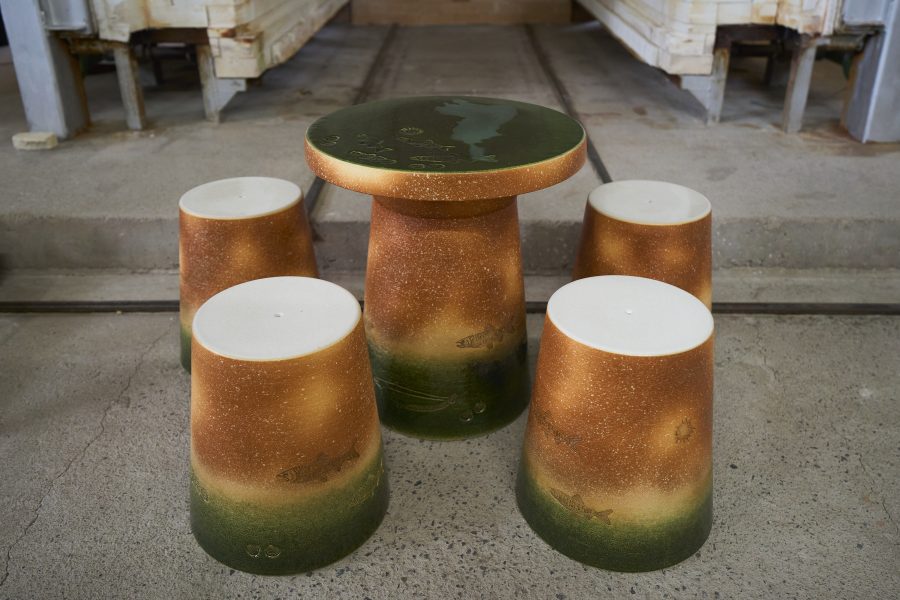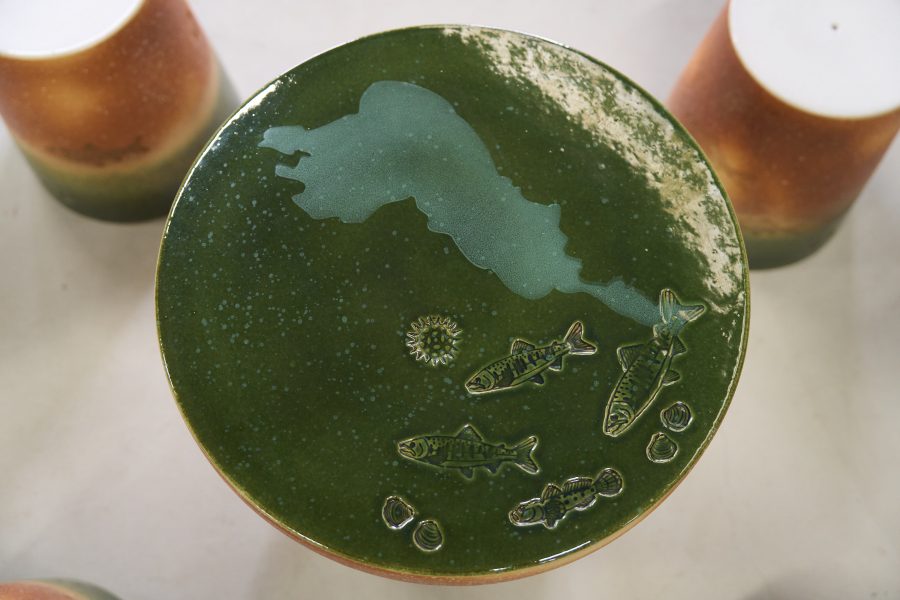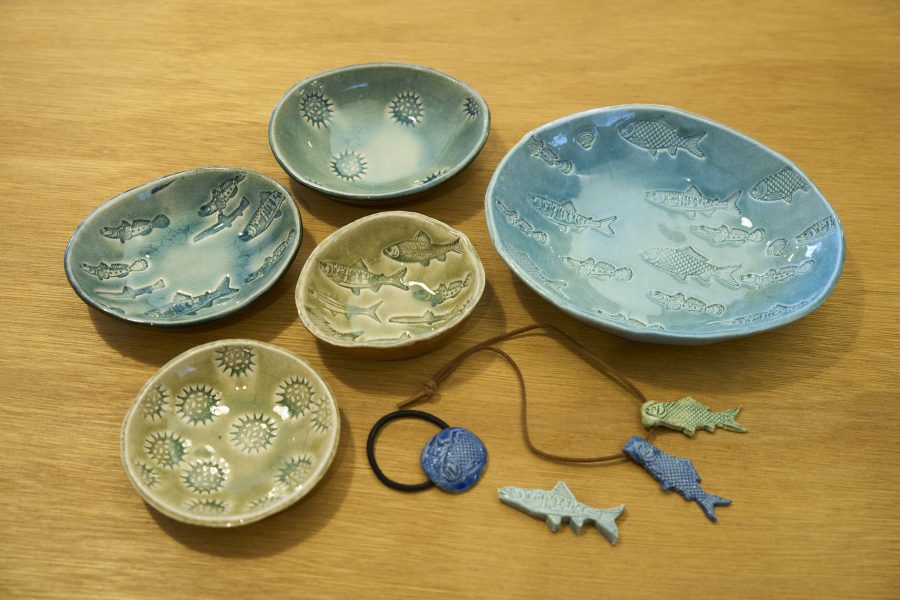
Unglazed tables and stools were glazed and then loaded into a kiln for firing them at about 1,200°C, morphing them into something completely different in appearance. The rich shades of scarlet, a reddish-brown color that appears after firing and is the defining feature of Shigaraki ware, and the deep green color of the Oribe glaze, which is a ceramic glaze that can develop a shiny green color after firing at high temperatures, make an exquisite contrast. Looking at the prototypes, Imai of Marushiseito got relieved that the tables and stools were fired up nicely.
Endemic fish species of Lake Biwa and others are illustrated on the tables and stools. Which color shades should be used for depicting Lake Biwa? Imai had continuously explored ideal color shades by repeating trial firing while using the glazes the Association newly developed. What Imai has gotten to by adjusting amounts of glazes to apply is a deep green color that reminds people of the gently rippling Lake Biwa, with the strong presence of the scarlet color with which people can tell at a glance that it is Shigaraki ware. He illustrated Lake Biwa in silhouette on the tabletop by applying layers of white glazes in order to bring various shades.
The pottery clay, which was developed for the Expo by blending recycled materials, such as shards of pottery, is fairly easy to use. According to Imai, the clay is efficient. He feels that it dries quickly after forming and increases in strength through firing. Imai expects confidently that he has secured a foothold for the future because it offers multifarious advantages, including reduction in production energy as well as effective use of resources.
He is steadily making preparations for pottery workshops at the “ascending kilns,” the landmark of Shigaraki. Resin-based stamps that have been shaped into fish indigenous to Lake Biwa, which are illustrated as motifs on the tables and stools, by using digital technology can play an active part in the workshops. Participants in the workshops will create their original items, such as plates and accessories, by freely using nine stamps shaped into such species as the giant Lake Biwa catfish and Pediastrum biwae. Furthermore, it should be wonderfully exciting for the participants to wait for the delivery of their pottery items in a month after firing. Ishino of Meizantogyo, who is in charge of the workshops, smiled, saying that they would not take on a challenge if there were no expos and people of all ages would come to Shigaraki and experience a slow daily life there.
While Shigaraki ware has been famous for the racoon figurine, it is not the only product offered in Shigaraki and a myriad of products of various sizes have been generated. Ishino said that Shigaraki’s tradition is to take on challenges on a continuous basis. They have been passing the tradition on to next generations by cooperating with each other in the Shigaraki area, facing challenges together, and bringing innovations repeatedly while flexibly adapting to society.
Craftsmen of the generation of Imai’s father showed the presence of Shigaraki ware through the Tower of the Sun built as the symbol of the world exposition held in 1970 in Osaka. In the Expo to be held this time, craftsmen of Imai’s generation are striving to bring about a new creation by venturing into using recycled resources and digital technology. The tranquil pottery village in the mountains is pursuing the even further distant future while facing soil and flames.

Tabletop on which Lake Biwa and its endemic species are illustrated

Shigaraki accessories and tableware, which people can create in an experience-based event
Share this article


